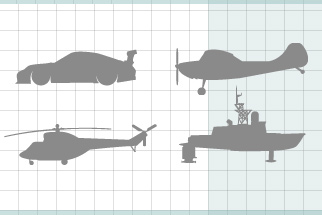What happened to Air France Flight 447? More than two years after the crash that took 228 lives, a new interim report from France's air accident investigation agency (BEA), based on cockpit voice and data recordings recovered in May, reveals how a combination of faulty instrument data and pilot errors sent the plane into a stall from which it never recovered.
The problems began shortly after 2 a.m., a little over three and a half hours into the flight, when the autopilot and auto-thrust disengaged, probably due to bad air speed data from the plane's iced-over Pitot probes. According to the BEA report, the two copilots who were in the cockpit at the time had no training in manual aircraft handling at high altitude, and their choices showed it: They tipped the nose of the plane up, causing it to lose lift and speed as it climbed, instead of down, which would have increased the speed and prevented a stall.
 |
For more on how lift and drag work, check out this interactive from NOVA's web site.
The BEA report bears out much of the expert speculation in NOVA's Crash of Flight 447, which focused on the failure of the airspeed-sensing Pitot probes and the ubiquity of autopilot, which has left many pilots without extensive hands-on training flying manually in challenging conditions. Yet, as the New York Times points out, "Investigators found that the loss of valid speed readings lasted for no more than a minute of the plane's terrifying four-minute descent." Even if the air-speed data had been lost entirely, the pilots could have saved the plane, BEA director Jean-Paul Troadec told reporters.
The BEA's full report will be out in early 2012.














Recent Comments